This article is written by Ashwani Dwivedi. In this article, the author has discussed the doctrine of acquiescence, its history along with its essentials, the use of this doctrine as defence to infringement, and landmark cases.
Introduction
Ever thought how a business could lose its trade mark just for waiting too long to prevent someone else from using it? Possibly you have read cases of businesses which forgot to safeguard their rights and then realised there was little they could do about it. These kinds of circumstances draw attention to a key legal concept in trade mark law known as acquiescence. It basically shows how delaying the defence of your brand, can make one lose the right to defend it forever.
Section 33 of the Trade Marks Act 1999 talks about acquiescence. It simply means that a trade mark owner may lose their right to prevent further use of their trade mark if they allow someone to use it for five years without opposition. It basically means holding off too long may result in losing your ability to act. But the issue goes beyond the delay; it also involves knowing that someone is using the trade mark and choosing to take no action.
This article will look at how acquiescence relates to other legal defences that are frequently raised in trade mark issues, such as estoppel and abandonment. By the moment you are done, you will know more about how these defences operate under Indian law, how they differ and where they could connect.
What is Section 33 of the Trade Marks Act, 1999
Section 33 of the Trade Marks Act of 1999 addresses acquiescence. This means that if a trade mark owner is aware of somebody else using their trade mark but decides not to take action, it may be taken as consent to that usage. The owner’s delay to act can be taken to mean as if he is passively consenting to the use of his trade mark.
Using a brand or logo without the consent and knowledge of the trade mark owner is in normal cases considered trade mark infringement. This may cause confusion in the minds of the customer about where a product or service is based, affecting the original brand’s goodwill. Trademark infringement is a serious issue as it reduces the value of the brand and has a negative impact on trade and commerce.
Still, in other cases, acquiescence can be used to benefit a person. However, this defence only applies if the person utilising the trade mark was honest and had no malicious purposes.
If they’re trying to pull a fast one on customers or exploit the trade mark’s reputation, they can’t just hide behind acquiescence as a reason. The courts will examine their actions to determine whether they were being honest or trying to pull a fast one.
Just because a trade mark owner doesn’t raise any objections doesn’t mean they are totally fine with the use of it. For acquiescence to occur, the trade mark owner needs to take some action—like giving passively consenting, verbally agreeing or demonstrating through their behaviour that they’re fine with the use.
Burden of proof under Section 33
The person using the trade mark needs to show that they honestly thought they weren’t doing anything wrong and that the owner’s actions led them to believe they can use the mark in question and that the owner of the trade mark does not have any objection to such use. Thus, the burden of proof to prove that the owner’s inaction falls within the ambit of acquiescence lies on the person who is using the trade mark, or the person against whom infringement action is brought by the owner of the trade mark.
Let’s go through other relevant provisions.
Exception to infringement under Section 32 of the Trade Marks Act, 1999
For an understanding of Section 33 of the Trade Marks Act 1999, we need to first understand the different defences and acts that don’t qualify as trade mark infringement under Section 32 of the Act.
One important defence is being honest and using it at the same time. Section 12 of the Act lets the Registrar give the green light for the registration of identical or similar trade marks for two different companies that provide the same or similar goods or services. This is possible as long as there’s honest concurrent use or any other special situation that the Registrar thinks is suitable. If that’s the case, this registration acts as a solid defence, meaning no one can file a lawsuit for damages due to infringement.
Other scenarios where trade mark use is allowed include:
- Using the trade mark in a way that does not take unfair advantage of the original owner.
- Using the trade mark solely to indicate the services being provided.
- Using the trademark outside the original territory where it is registered.
- Using the trademark on goods that are sold in retail but were bought in bulk from the trademark owner.
- Using trademarks when selling spare parts or accessories, which is common in industries like automotive and engineering.
- The use of a trade mark by an assignee after the trade mark has been assigned.
- Prior use of the trade mark by someone else before the current claim.

Section 32 of the Trade Marks Act 1999 describes certain scenarios in which a trade mark owner is unable to pursue legal action for infringement. It’s all about the owner giving their silent nod to the use of their registered trademark, which the Act recognises.
History and evolution of the principle of acquiescence
The basic provision of acquiescence came under the Trade Marks Act of 1999 under Section 33. The Trade Marks Act of 1940 (TM Act) or the Trade and Merchandise Marks Act of 1958 didn’t have an explicit provision regarding acquiescence.
Legislative history
The defence of acquiescence was not present in any of the provisions of the Trade and Merchandise Marks Act of 1958 or any other law. This law basically said that if there is no action taken by the owner, it would act as a condition against him in the future.
Section 30 of the Trade and Merchandise Marks Act 1958 explains certain rules for using trade marks in business. These conditions help us understand when someone can use a trade mark without being on the wrong side of the law or the rights of the trade mark owner. The rules are as follows:
1. If someone from the business uses it: This rule says the person who works with the trade mark owner can use the trade mark. If someone works for the owner or is involved with the business they can use the trade mark. This rule is for persons who are working under the trade mark owner.
2. Permission given by the owner: The second rule says that a person can use the trade mark if the owner has given them permission. This means that the trade mark owner has allowed another person to use the trade mark. This permission can be given through a licence, an agreement or other formal approval so they can use the trade mark for goods or services.
3. Goods not removed by the owner: The third rule states that the trade mark owner shouldn’t have gotten rid of or destroyed the goods or services that feature the trade mark. If the owner of the trade mark does not take steps to remove the products from the market, it suggests that using the trade mark on those items is allowed.
4. Trade mark used on many products: The fourth rule states that the trade mark needs to be used on a wide range of products. This indicates that the trade mark has been used on a variety of products and those products have been available for sale or distribution in the market. When you use the trade mark like this, it means the owner has given their consent for use of the mark on those specific products.
These rules help explain when someone can use a trade mark without breaking the rights of the owner. If an individual related to the company has consent and the protected products are open in the market without being removed, then they are allowed to use the trade mark for business purposes.
Thus, the defence of acquiescence was not itself inculcated into the legislative acts of the country. But what we can find here is that there was a mention of passive consent and the acceptance of the fact that even through passive encouragement, a trade mark may have been used if it was done in good faith.
Judicial history
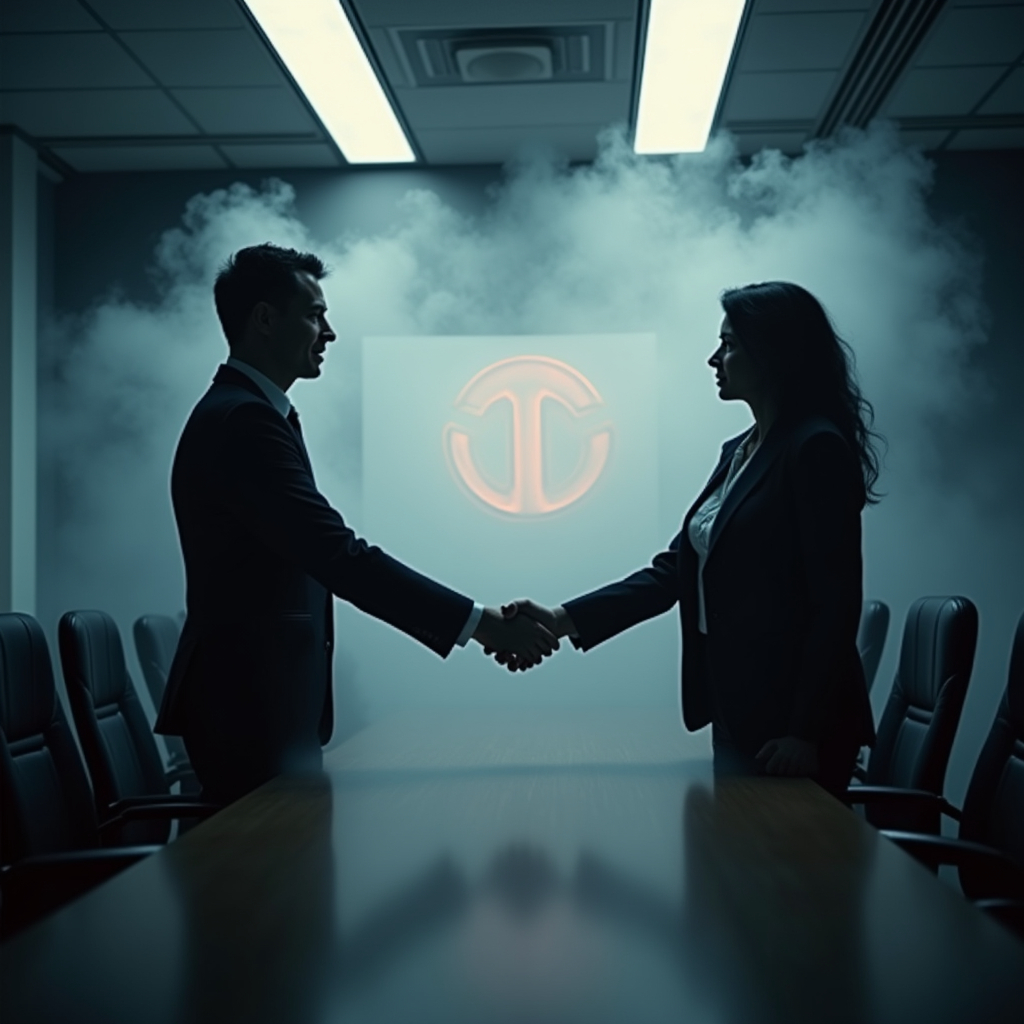
It is significant for us to note here that before the Trade Marks Act of 1940, India did not have an official law for trade marks. Instead, Indian courts followed rules set by English courts like those from the Reports of Patent Cases (RPC) and the Chancery Division of England. These courts decided that just ignoring trade mark infringement was not the same as acquiescence, which means allowing it without protest.
In India, before the introduction of legal trade mark laws, for proof of acquiescence in a trade mark dispute, an owner had to show two things:
- They did not prevent the other person from using the trade mark for a long period of time, and
- They additionally encouraged the other individual to invest in the business involving that trade mark.
This rule made sure that trade mark owners couldn’t later complain about infringement if they had allowed and encouraged someone else to use the mark.
Moolji Sikka & Co. vs. Ramjan Ali (1928)
The Calcutta High Court in Moolji Sicca & Co. vs. Ramjan Ali (1928) made it clear that for a defence under the heading of acquiescence against a trade mark owner, it needs to be shown that the owner was conscious of the use made by the other user of his mark and encouraged such use by failing to object to the same. The Calcutta High Court relied on the statement of Lord Justice Cotton in Proctor vs. Bennis and Ors (1887) (36 Ch. Div.) as regards the acquiescence defence thus:
“It is necessary that the person who alleges this laying by should have been acting in ignorance of the title of the other man and that the other man should have known that ignorance and not mentioned his own title.”
Indian Dental Works And Anr. vs K. Dhanakoti Naidu And Anr. on 24 February 1961
This case was about a mother and her son who took over a tooth powder business started by the husband in 1934. The product was called Pyorrhea Tooth Powder and had the number 1431 along with a picture of a face showing diseased gums. After the founder passed away someone else started using the same name and number for their own product. The mother and son argued that this confused customers, making them think the other product was theirs.
The plaintiffs mentioned another case Gasper and Co. vs. Leong Chey and Co. from 1934 where the court ruled that using someone else’s trade mark even by accident could still lead to trouble. This helped support their argument.
The court agreed with the mother and son. They had used their trade mark for a long time, which gave them the right to it. The court told the other person to stop using the name 1431 and copying the design because it misled customers.
The other party did not have to return all the items with the trade mark but they could no longer use it moving forward. The court said it was clear that the other party had tried to copy the plaintiffs product to confuse people and benefit from it.
Gasper & Co. vs. Leong Chey & Co. (1934)
This case was relied upon in the Indian Dental Works case. The court underlined in Gasper & Co. vs. Leong Chey & Co. (1934) that where the owner of a trade mark stands by and lets several other persons replicate his mark he loses his mark and loses his right in it by reason of the fact that mark has become common to the trade. On the other hand, the plaintiff was able to show that the other firms violating the image of a cruise ship or sailing ship used marks theory for no more than one year in the current case and that the plaintiffs were never aware of their usage.
Devi Doss and Co. Bangalore vs. Athur Abboyee Chetty (1941)
In Devidoss And Co., A Firm Of Cloth … vs. Alathur Abboyee Chetty And Co., A Firm Of … (1941) case, the Madras High Court gave its decision based on Romer J. ‘s 1896 remark in Rowland vs. Michell (1897) stated, if the individual uses their business to earn profits and build their reputation, despite criticism, they cannot then turn around and claim the business should be shut down. The actions should be in line with intent and success should also have accountability.
As decided by Indian courts before the country’s trade mark law was made official, a third party can use acquiescence as a defence in a lawsuit against the owner while using his trade mark without permission as long as the owner knew about the unapproved use and chose not to object even though he knew about it. Inaction by an owner who does not protest unlawful use of their trade mark might be seen as permission over time; acquiescence provides a defence to the same.
T.V. Venogopal vs. Ushodaya Enterprises Ltd. & Anr 2011
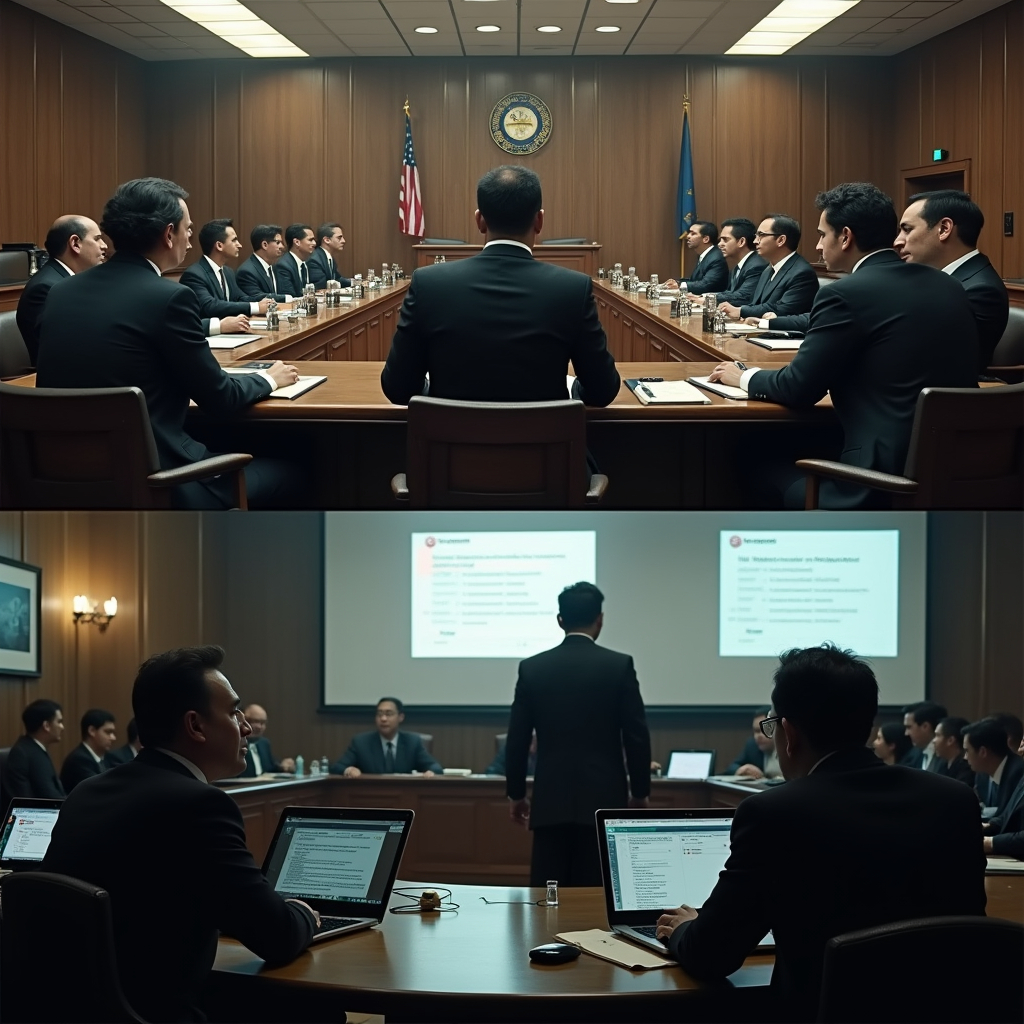
Facts of the case
- The appellant owned a business called Ashika Incense incorporated in Bangalore, where they made incense sticks under the name ‘Eenadu’.
- The respondent published a Telugu newspaper also called Eenadu and filed a lawsuit saying the appellant was copying their trade mark and copyright.
- The appellant argued that Eenadu is a common word used in South Indian languages so the respondent can’t claim it as their own.
- The appellant also said that the respondent allowed other businesses to use the name Eenadu in different fields, which weakens their claim. They referred to Section 33 of the Trade Marks Act 1999 which talks about allowing others to use a trade mark without objecting (acquiescence).
Issues:
- Did the appellants use of the name ‘Eenadu’ violate the respondents trade mark and cause confusion even though they are in different types of businesses?
- Did the respondent allowing others to use the name Eenadu affect their right to protect the trade mark in this case according to Section 33 of the Trade Marks Act 1999?
Judgement:
- The court decided that the respondent’s name, Eenadu, had gained a lot of reputation and goodwill in Andhra Pradesh.
- The court found that the appellant used the name Eenadu dishonestly, trying to take advantage of the respondent’s reputation which could confuse people.
- Because of this, the court ruled in favour of the respondent and said the appellant couldn’t use the name ‘Eenadu’ in Andhra Pradesh.
- The court also said that just because the respondent allowed other businesses in different fields to use the name it didn’t mean they gave up their right to protect it where confusion could happen. Section 33 did not apply because the appellant acted dishonestly.
Principle of acquiescence under Section 33
Section 33 of the Trade Marks Act of 1999 covers the implications if the owner of a registered trade mark fails to take action when someone else uses their mark.
It is based on the maxim “Vigilantibus non dormientibus aequitas subvenit”, which means law helps the vigilant not the indolent.
Section 33(1) states that if someone uses a trade mark that is registered without permission and the original owner is conscious of it but does nothing for a period of five years, the owner is considered to have given passive consent for another person to keep using it. This is called passive consent.
If the owner does not take action in those five years, they lose certain rights. One of these rights is the ability to say the trade mark is still officially theirs under sub-section (1)(a).
The ability to stop another person from using the mark is another right. But for this to be a defence, the person who started using the trade mark must prove they were acting in good faith and believed they were covered under sub-section (1)(b). If they cannot prove this, they lose this defence.
Lastly sub-section (2) says that if both owners of the earlier and later trade marks do not take action they both lose the right to oppose each other. This means that neither of them can stop the other from using the trade mark anymore.
In simple terms, we can see that these provisions encourage trade mark owners to take action quickly if they see someone else using their trade mark without permission. Otherwise, it might be too late to do anything about it.
Essential ingredients of Section 33
There are three basic ingredients of Section 33 which talk about the defence of acquiescence. Ingredients for getting the defence of acquiescence are listed below:
- The holder of the trade mark should be aware that an infringement has occurred.
- The infringement has caused huge damage to the rights of the trade mark owner.
- Also, if the proprietor has not been able to send a specific notice, it would be interpreted as an encouragement on the part of the proprietor.
In these kinds of circumstances, it becomes essential to keep in mind that the law must be followed while also keeping in mind the purpose of trade mark protection. It basically means that the basic purpose of a trade mark registration is that an average person can be able to understand the difference between two products or two services.
Taylor Fashions Ltd. vs. Liverpool Victoria Friendly Society. (1979) decision by Oliver L.J. served as the cornerstone for the Supreme Court’s decision in Dr Reddy’s Laboratories Pvt. Ltd. vs. Reddy Pharmaceuticals Limited (2013) stating-
“Estoppel by conduct is a legal idea that has grown a lot over the years. Basically, it means that one should be held responsible for their acts. It’s about making sure that everyone is treated fairly based on how they have behaved. If someone has done or said something that made others believe they wouldn’t act differently they shouldn’t be allowed to change their mind if it would hurt the other person.”

Therefore, the Supreme Court declared that in cases involving the doctrine of estoppel by acquiescence or waiver for infringement, the conduct of the parties has also been deemed to constitute a reason for raising the court’s attention. In Neel Electrical Techniques & 8 Ors. vs. Neelkanth Power Solution & Anr. (2016) it involved a case of two trade marks. The court observed that unless the owner of the trade mark does not object to the use of the same trade mark for a period of five years. Then the use of the trade mark by the other party would mean that there was positive consent on the part of the trade mark owner.
Judicial application of Section 33
At its outset, Section 33 basically permits to hold the proprietor accountable for his ignorance and actions following the knowledge of the marks some pertinent case laws can be used to clearly illustrate this principle:
Make My Trip (India) Private Limited vs. Make My Travel (India) Private Limited (2019)
Facts
In the case Make My Trip vs. Make My Travel (2019) the company Make My Trip went to court because they felt another company called Make My Travel was copying their name and logos.
The company Make My Trip asked the court to stop Make My Travel from using:
1. The name ‘Make My Travel’, the initials ‘MMT’, and the tagline ‘Dreams Unlimited’.
2. The logo of ‘Make My Travel’ also had the words ‘Dreams Unlimited’ and ‘MMT’.
3. The website name that ‘Make My Travel’ was using.
The Make My Trip company called these things the Impugned Marks (which means marks they felt were wrong to use).
Make My Trip said that these marks were too similar to their own marks which were:
1. The ‘MakeMyTrip’ word mark (their brand name).
2. The letters ‘MMT’.
3. Their taglines: ‘Memories Unlimited’ and ‘Hotels Unlimited’.
Together these were called the MakeMyTrip Marks.
Issues
- Does Make My Travel (India) Private Limited’s name and logo violate Make My Trip (India) Private Limited’s trade mark?
- Given the two businesses’ similar names and branding, is there a chance that the public will become confused?
- Has acquiescence resulted from Make My Trip’s purported prior knowledge of Make My Travel’s branding?
- Is it appropriate to issue a permanent injunction to stop Make My Travel from using comparable trade marks?
Judgement
The court decided that it seemed like Make My Travel was not being honest when they used the name and other things that were so similar to Make My Trip. The court said that Make My Travel didn’t give any good reason why they chose these names and logos.
The court also said that Make My Trip did not give permission to Make My Travel to use these marks even though a customer care worker from Make My Trip talked with Make My Travel. That worker didn’t know about the trade marks and it wasn’t enough proof that Make My Trip allowed the copying.
Therefore, the court decided that Make My Travel had to stop using these marks because it was confusing and unfair to Make My Trip and their customers.
Ramdev Food Products vs. Arvindbhai Rambhai Patel and Ors (2006)
Facts
In this case, Ramdev Food Products Pvt. Ltd. complained about Arvindbhai Rambhai Patel & Ors. using their masala products without permission. They claimed this was an unauthorised use of their trade mark.
Issues
- Does Ramdev Food Products Pvt. Ltd.’s registered trade mark rights get in the way of the defendant’s use of the “Ramdev” trade mark?
- Does the MOU between family members permit the defendants to utilise “Ramdev” legally?
- Will the public become confused as a result of the defendant’s use of comparable labels and packaging?
- Is it appropriate to prohibit the defendants from utilising “Ramdev” outside of approved outlets?
Judgement
The court explained that if someone allows others to use their trade mark while they spend money on it it is called acquiescence. It simply means that once the owner allows the use knowingly, they lose the right to stop it later. Just delaying action is not enough to refuse an injunction. Instead if someone accepts or ignores the infringement it may become unfair to give them legal help later.
Emcure Pharmaceuticals vs. Corona Remedies Pvt. Ltd. (2014)
Facts
In this case in 1996 Emcure Pharmaceuticals Ltd. registered the trade marks ‘OROFER’ and ‘OROFER-XT’ for medicines used to treat iron deficiency and anaemia. Between 1997 and 2012 the company sold products worth over Rs. 95 crores exporting them to 34 countries. Emcure claimed distinctive trade mark rights and common law rights.
Issues
- Are the Plaintiff’s registered trade marks “OROFER” and “OROFER-XT” violated by the Defendant’s use of the trade marks “COROFER” and “COROFER-XT”?
- Will customers become confused about the origin of the pharmaceutical products as a result of the marks’ similarity?
- Is the Defendant trying to mistake its products for the Plaintiff’s?
- Should the court designate a Court Receiver and issue an interim injunction to limit the defendant’s use of the disputed trade marks?
Judgement
The Bombay High Court held that the plaintiffs’ failure to take action did not mean that the defendant had received encouragement to use the trade marks. Simply not taking legal action cannot be seen as granting permission to the defendant.
Hindustan Pencils Pvt. Ltd. vs. M/s. India Stationery Products Co. Ltd. (1989)
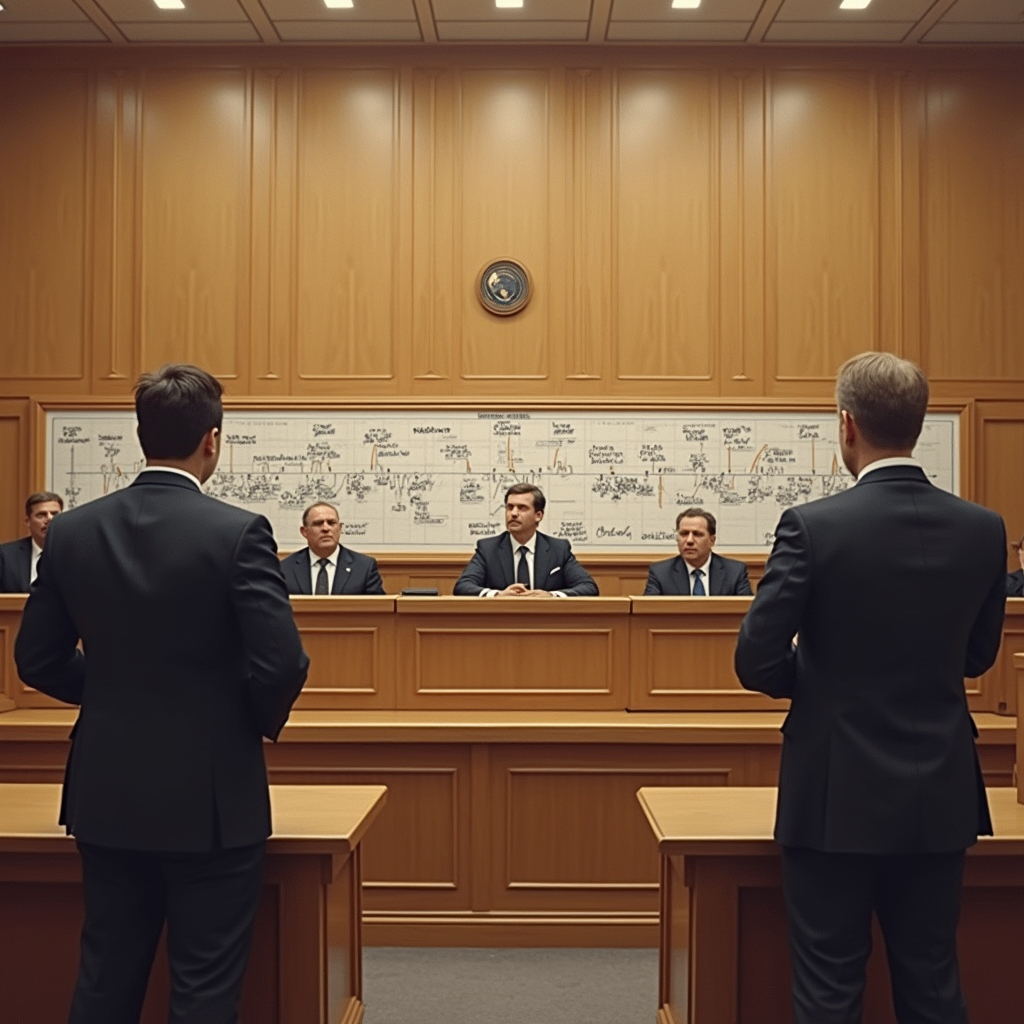
Facts
In this case Hindustan Pencils Pvt. Ltd. discovered in 1985 that India Stationery Products Co. had secretly registered a copyright for a label similar to their own. The defendants used the name Nataraj and even included a dancing figure that looked identical to the one used by Hindustan Pencils for their trade marks.
Issues
- Does the Plaintiff’s registered “Nataraj” trade mark get in the way of the Defendant’s use of a similar trade mark?
- By using a similar brand and technology, is the Defendant trying to pass off its goods as the Plaintiff’s?
- Will the plaintiff’s failure to file a lawsuit be considered “inordinate delay” or “acquiescence,” which would affect their ability to seek temporary relief?
- Should the defendant be subject to an interim injunction from the court?
Judgement
The court held that if someone violates a trade mark holder’s rights the trade mark owner can get an injunction. If passive encouragement is proven the trade mark owner must return any profits gained from unauthorised use.
Hybo Hindustan vs. Sethia Hosiery Mills (1993)
Facts
In this case, the plaintiff, Hybo Hindustan alleged that the defendant Sethia Hosiery Mills had used their registered trade mark ‘VIP’ without permission. The plaintiff sought an injunction to prevent Sethia Hosiery Mills from using the mark for hosiery products.
Issues
- Does the Plaintiff’s registered “VIP” trade mark rights go in the way of the Defendant’s use of the “VIP” trade mark for ready-made clothing and hosiery?
- Can the Defendant defend its use of the “VIP” mark by claiming that the Plaintiff’s trade mark registration is no longer valid?
- Has the plaintiff’s right to relief been impacted by the delay in bringing the lawsuit?
- Should the court uphold the defendant’s temporary injunction?
Judgement
The Calcutta High Court ruled that if a defendant uses a trade mark knowing that it violates the rights of the original owner a delay in taking legal action should not prevent the granting of an injunction. The interim injunction was granted to the plaintiff preventing the defendant from using the mark until the final decision was made. This judgement emphasised that delay alone is not enough to allow unauthorised use of a trade mark to continue.
Hidesign vs. Hidesign Creations (1991)

Facts
In this case Mrs. Pampa Kapoor the owner of Hidesign had been making and selling feather garments, bags, belts and other leather products since 1977. She claimed to be the first to use the trade mark ‘Hidesign’ which was displayed on all products and business literature. In 1980 she found out that Hi-Design Creations was using a similar name for similar products.
Issues
- Has Hidesign, the plaintiff, created proprietary rights in the “Hidesign” trade mark that would grant it the right to use the term exclusively?
- Will customers be confused by the Defendant’s use of the similar mark “Hi-Design,” mistakenly associating it with the Plaintiff’s well-known brand?
- Given its established market presence, may the plaintiff assert that the trade mark “Hidesign” has goodwill and reputation, making it eligible for protection under passing off principles?
- Is it possible that the defendant’s acts qualify as dishonest mark adoption and need an injunction to stop future use?
Judgement
The Delhi High Court ruled that to claim acquiescence, the defendant must prove honest use of the mark without knowing the owner’s rights. A mere delay in action by the owner does not give the defendant the right to continue using the mark. The court emphasised that honest concurrent use is necessary for acquiescence to apply.
Cable News Network Lp Lllp (Cnn) vs. Cam News Network Limited 2008
Facts
In this case, ‘CNN’ the plaintiff, filed a temporary remedy from the court for alleged trade mark infringement, unfair competition, and passing off by the defendant. ‘CNN’ claimed that its brand name ‘CNN’ was known around the world due to its big broadcast network. It further stated that the trade mark has been officially registered in India in several categories, including printed items, media content, and software.
‘CNN’ also said that it had spent a lot of money developing the ‘CNN’ brand, which resulted in a respected position and praise in India and around the world. ‘CNN’ said that the defendant, while using ‘CNN’ in their magazine, ‘CAM News Network Today’, infringed on its trade mark and can confuse customers.
Issues
- Does the usage of “CNN” by Cam News Network violate CNN’s registered trade mark?
- Is it acceptable for Cam News Network to just use “CNN” as an acronym for its name?
- Has CNN’s claim been undermined by its tardiness in bringing this lawsuit?
- Should CNN be given temporary respite to stop Cam News Network from using it going forward?
Judgement
The court considered whether to grant temporary relief to CNN by looking at three key factors:
- whether CNN had a strong case
- whether the balance of convenience favoured CNN and
- whether CNN would suffer serious harm if the relief was not granted.
The defendant argued that CNN had delayed too long in seeking relief but the court rejected this defence because the defendant could not prove they were honestly and concurrently using the CNN mark.

The court found that the defendants use of CNN alongside CAM News Network Today could mislead the public into thinking there was an affiliation with CNN. As a result the court granted temporary relief to CNN preventing the defendant from using the CNN trade mark in any way for publishing or providing news services.The court noted that these findings were preliminary and would not affect the final decision on the case.
Understanding laches and acquiescence in intellectual property law
These are two important rules used in intellectual property law to stop old claims from being brought up again but they work in different ways.
Acquiescence occurs when the trade mark owner does nothing to stop someone else from using their trade mark without consent. With time, this may seem if the owner has allowed its use passively. If the trade mark owner knew about this infringement and did nothing about it, the other person may take it as his consent. In India, courts have said that if a trade mark owner ignores the use of their mark, it becomes harder for them to make a claim later.
- Under Section 33 of the Trade Marks Act 1999, if the trade mark owner allows someone else to use their mark for five years without taking action, they may lose the right to stop that use. The only exception is that there was malicious use and intentions of the third party.
Laches is when someone waits too long to take legal action to protect their rights. If a person delays too much they might lose the ability to get help from the courts because it would be unfair to the other party. In India this idea is based on fairness. Courts look at each case to decide if the delay was too long, why it happened and how it affected the other party. Laches often come up in civil cases like those related to property or intellectual property.
Indian courts, including the Supreme Court, have denied help to people who waited too long to take action especially if their delay caused harm to the other party.
Trade mark infringement cases: In India, both laches and acquiescence can be used as defences in trade mark cases. Courts will look at whether the trade mark owner knew about the unauthorised use and if their delay caused the other person to believe they would not face any legal issues. In the case of M/S Power Control Appliances & Ors. vs. Sumeet Machines Pvt. Ltd. (1994) the Supreme Court said that just being silent or not doing anything is not enough to prove acquiescence. It must be shown that the trade mark owner led the other person to believe they could use the trade mark without any objections.
The difference has been objectively explained in the table below:
| Acquiescence | Latches |
| The owner of a trade mark appears to passively permit unauthorised usage by taking no action to prevent it. | Delay in filing a lawsuit, which could lead to the loss of the remedy. |
| The owner of the trade mark was aware of the illegal use but did nothing about it. | Unreasonable hold-up on the part of the rights holder to file a lawsuit. |
| Discovered in accordance with Trade Marks Act of 1999, Section 33. | Based on the fairness concept; each case is examined separately. |
Passing off and acquiescence
The interchangeability of passing off and acquiescence leads to significant confusion. It is important to understand the difference between the two if one plans to defend their trade mark from infringement.
It is illegal for someone to claim their goods or services are the same as those of another. This practice is known as passing off. This may cause confusion and harm the reputation of the rightful owner. The court held that no one could make money by just copying another person or brand. This includes using that person’s reputation to promote products. This was established in the 1996 case N.R. Dongre & Ors vs. Whirlpool Corporation (1996). Using another person’s brand without permission was determined to be passing off in ICC Development (International) Ltd. vs. Arvee Enterprises (2003). Passing off is mentioned in Sections 27(2), 134(1)(c) and 135 of the Trade Marks Act, 1999. It is not defined in detail.
On the other hand, the Trade Marks Act’s Section 33 explains acquiescence. It happens when a trade mark holder is aware that another party is using their mark but they decide to allow it to continue nevertheless forfeiting their right to later stop it. Choosing to acquiesce conveys the idea that the owner of the trade mark has approved it on purpose, allowing the other party to use the mark without restriction. The reason is that the defendant might use acquiescence to show that the trade mark owner knew the mark existed and granted the defendant consent to use it without permission; acquiescence is important in passing off cases.
Importantly, acquiescence describes the trade mark owner’s conduct while passing off describes the intentional deception and confusion of others. In order for the defendant to use acquiescence as a defence, they must show that the trade mark owner was aware of the usage and misled them into thinking they wouldn’t pursue legal action. This is where acquiescence differs from just exhibiting dishonesty or fraud. To show acceptance in this scenario, the trade mark owner’s actions are essential.
Passing off has expanded throughout time to include a variety of situations such as unfair business tactics and trade mark infringement. The 1990 case Reckitt and Colman vs. Borden (1990) established that misrepresentation, damage, and goodwill are the three main elements needed to prove passing off. However, the defendant can say that if the trade mark owner gave their consent or permission to this fraud they have lost their rights.
Finally, in passing off cases, acquiescence is a powerful defence especially if the trade mark owner has given the defendant the impression that there won’t be an issue through their actions or inaction. This shows that in order to maintain their ability to stop others from using their mark, trade mark owners must move quickly to protect their rights.
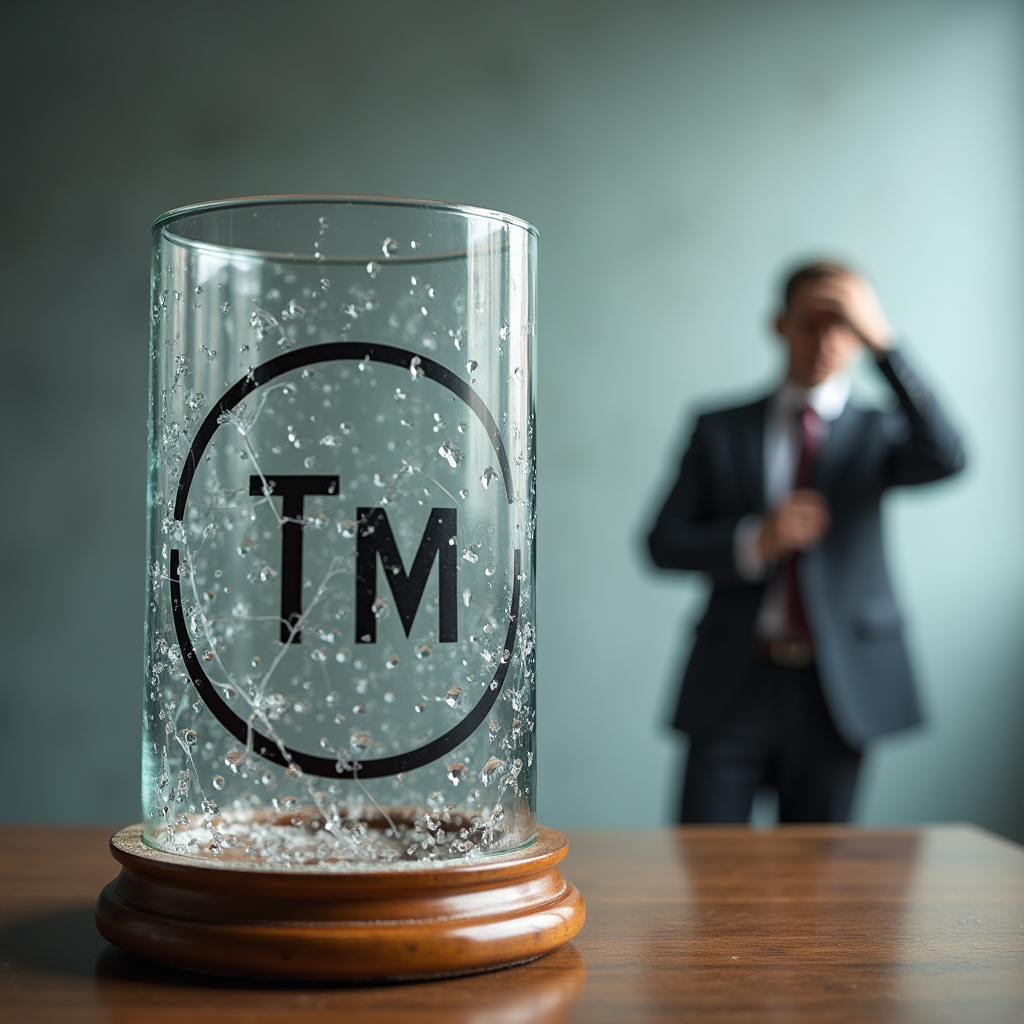
The following table provides a better understanding of the concepts:
| Passing off | Acquiescence |
| Illegal for one to claim their goods/services as those of another, causing confusion and potentially harming reputation. | The owner of a trade mark may lose their right to object if they willfully permit another party to use their mark. |
| Deliberate deception by the defendant to mislead customers. | Inaction on the part of the trade mark owner indicates their explicit or tacit consent. |
| Implied in the Trade Marks Act of 1999, Sections 27(2), 134(1)(c), and 135 respectively. | Defined in accordance with Trade Marks Act of 1999, Section 33. |
Conclusion
In most trade mark infringement cases, a trade mark owner can get a court order to stop the illegal use. But if the owner knows about the infringement and doesn’t take action soon they might lose the right to sue. This is called acquiescence. Acquiescence can only be used as a defence if the person using the trade mark act honestly and in good faith.
Before the Trade Marks Act of 1999 courts needed these conditions to prove acquiescence:
- The user didn’t know about the owners rights.
- The owner knew about the infringement.
- The owner didn’t try to stop the use.
- The use continued for a long time.
Although trade mark law often grants complete rights to the owner, acquiescence means the situation where the person using the brand can remain using it with the owner. This will benefit companies since it allows them to retain using a trade mark if certain criteria are satisfied.
Frequently Asked Questions(FAQs)
What is the difference between consent and passive consent ?
Consent is the active, clear agreement to something. Passive consent, also referred to as acquiescence is the ability of someone to let something happen without taking action against it. Usually expressed by words or official paperwork, this is a clear voluntary action in which a person or entity knowingly agrees to a given act or use. Consent is deliberate, therefore the person or party directly expressing their agreement.
In legal terms, passive consent means not opposing or taking action despite knowledge of it. Silence or inaction instead of clear agreement amounts to implicit permission. The important point is that when given the chance assuming implicit consent, the person or entity does not show resistance.
Can a trade mark owner get monetary relief for damages after someone uses their mark without permission?
Once acquiescence is proven, the owner of the trade mark usually can’t go after damages or an injunction. The person who wasn’t supposed to be there can use the defence of acquiescence if they can show that they did so in good faith and that the owner passively agreed without objecting.
What are the most important things that need to be shown to prove consent to satisfy acquiescence in trade mark infringement cases?
The defendant has to show that:
- the trade mark owner knew about the violation
- the owner did nothing for five years
- the defendant used the mark in good faith and
- the trade mark owner showed support or failed to object.
What are the benefits of Section 33 of Trademarks Act 1999?
The principle of acquiescence under Section 33 of the Trade Marks Act, 1999, assists trademark owners in the following ways:
- It prevents delayed objections and trademark owners cannot object to their use after a certain amount of time.
- It promotes justice by ensuring that firms cannot utilise inaction to hurt another party.
- It encourages consistency and revents avoidable disagreements and litigation.
- It encourages reliance and protects those who have counted on the continued use of a trademark.
References
- Text and commentary on the Trade Marks Act 1999 and the Geographical Indications of Goods (Registration and Protection) Act 1999 by K.C. Kailasam
- Law Relating to Intellectual Property by V.K. Ahuja
- Intellectual Property Rights-Infringement And Remedies by Ananth Padmanabhan
- http://www.commonlii.org/in/journals/NALSARLawRw/2006/2.pdf
- https://jlrjs.com/wp-content/uploads/2023/03/42.-Soumi-Lahiri.pdf
Students of Lawsikho courses regularly produce writing assignments and work on practical exercises as a part of their coursework and develop themselves in real-life practical skills.
LawSikho has created a telegram group for exchanging legal knowledge, referrals, and various opportunities. You can click on this link and join:
Follow us on Instagram and subscribe to our YouTube channel for more amazing legal content.
 Serato DJ Crack 2025Serato DJ PRO Crack
Serato DJ Crack 2025Serato DJ PRO Crack


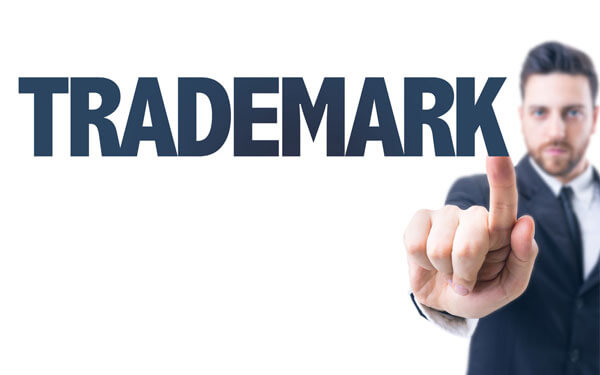



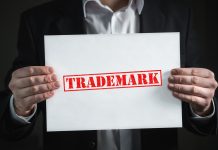


 Allow notifications
Allow notifications



